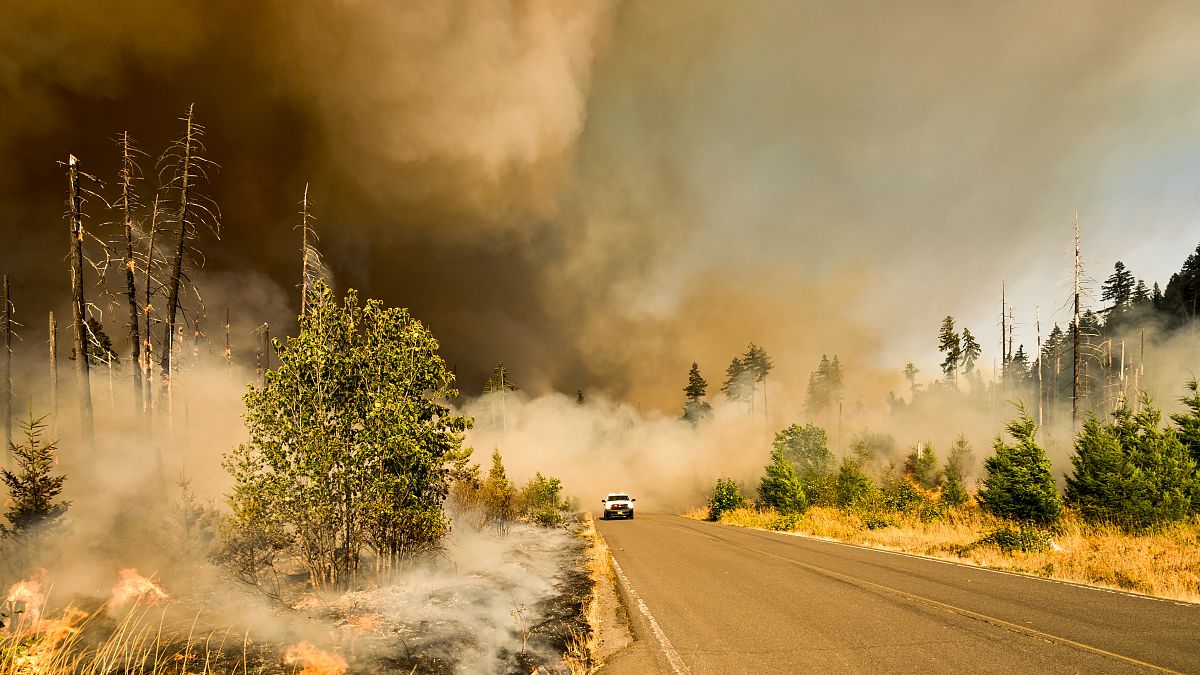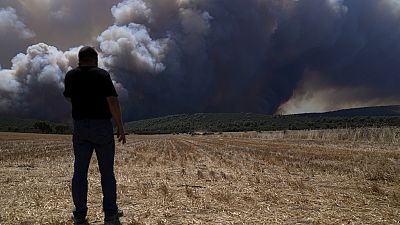At the beginning of June, the smoke reached Norway.
Canada is currently experiencing the worst wildfire season on record.
At least 75,000,00 hectares across the country have already burnt and there are still several months of peak wildfire season to come.
After covering the east coast of North America, clouds of smoke from the blazes have now drifted across the Atlantic to Europe.
Here’s how the smog has travelled and the effects it could have on the continent.
Smoke from Canadian wildfires has reached Europe
On Monday 26 June, smoke from Canada’s raging wildfires could be seen across western Europe using satellite imagery, the UK Met Office reports.
The smog travelled across the Atlantic Ocean via the jet stream - a fast flowing air current in the Earth’s atmosphere.
At the beginning of June, the smoke reached Norway and on Monday, it also arrived in the UK.
For the remainder of the week, the smoke will remain in the upper levels of the atmosphere over Europe, forecasts predict.
As the smoke enters the atmosphere at high altitudes, it is able to linger for longer and travel long distances.
Will the Canada wildfire smoke affect air quality in Europe?
Earlier this month, the wildfire smoke enveloped New York City in a hazardous orange haze.
Residents were advised to remain indoors as much as possible.
“This is detrimental to people’s health,” New York Governor Kathy Hochul warned.
But in Europe, the effects will not be the same. The smoke will not lead to any significant worsening of air quality for residents as it will remain in the upper layers of the atmosphere.
It could, however, lead to some picturesque scenes in our skies.
“Whilst the smoke is high up in the atmosphere, it may make for some vivid sunrises and sunsets in the next few days,” the Met Office wrote on Twitter.
Canada wildfires are the worst on record
In Canada, the blazes continue to rage across multiple provinces. On 26 June, there were 27 new wildfires, according to the National Fire Situation Report.
While air quality in Europe has not been affected, many areas of North America are seeing dangerous conditions.
In Ottawa, Canada’s capital city, the air quality was deemed as “high risk” over the weekend.
Residents experienced a slight reprieve on Monday thanks to stormy weather and wind changes, but the smoke is likely to return later in the week.
Air quality warnings have also been issued in the US including in Wisconsin, Michigan, and Indiana.
“We’re seeing more and more of these fires because of climate change,” tweeted Canada’s prime minister Justin Trudeau.
“These fires are affecting everyday routines, lives and livelihoods, and our air quality. We’ll keep working - here at home and with partners around the world - to tackle climate change and address its impacts.”
Direct links between the wildfires in Canada this month and climate change have not been confirmed by scientists. But in general, the climate crisis is provoking more fire-inducing conditions.
A 2021 report from the Intergovernmental Panel on Climate Change (IPCC) found that dry, windy and hot weather conditions, which increase the chances of fire taking hold, will become more common in some places, including Atlantic Canada and the US, as climate change worsens.



